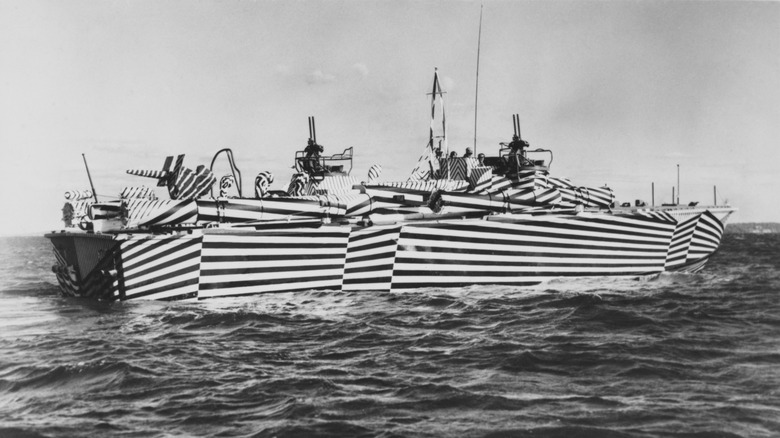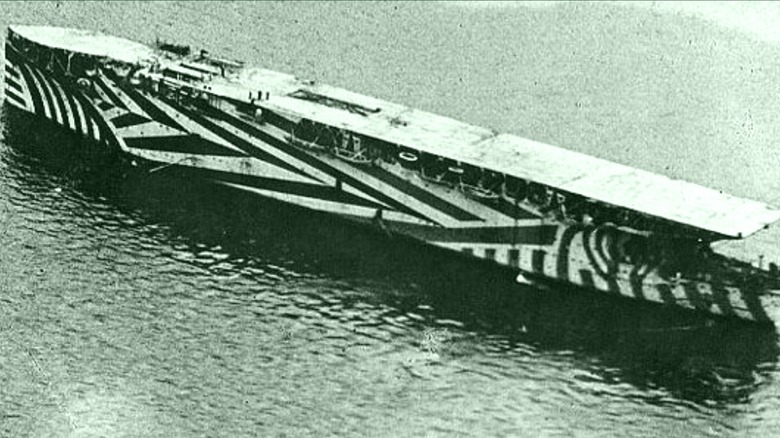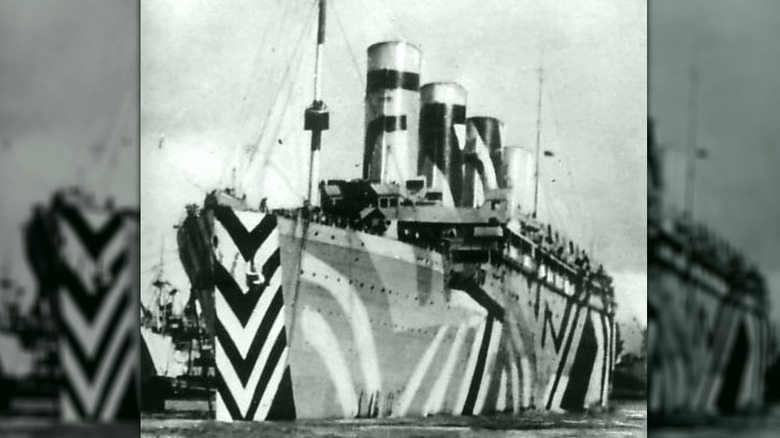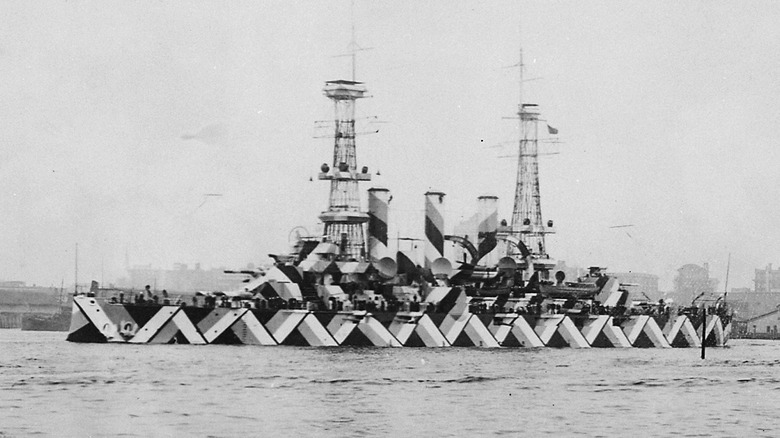Three Unusual Camouflage Patterns Used By WWI Naval Vessels
Militaries began using camouflage during World War I as the rise of aerial photography and trench warfare rose in popularity. Most camouflage used during World War I was found on vehicles and equipment, but soon after its introduction, people began wearing clothing to match their environments. Granted, camo patterns in the early 20th century look nothing like they do today, but it had to start somewhere.
The world's militaries continued adapting and upgrading their camouflage patterns throughout the Great War and in various places where the conflict raged. It was during WWI that militaries began experimenting with untraditional patterns, and despite the way they appeared, most of them worked rather well. This is especially true of naval vessels that sported some of the oddest camo patterns in military history. Many Allied nations tried different patterns and colors on their vessels, hoping to trick submariners peering at them through periscopes.
This was especially employed by the British, who included odd patterns with sharp corners, looking nothing like the more traditional blotchy guise adopted by modern militaries. This kind of pattern was called Dazzle Camouflage, though historians prefer to call it "Razzle Dazzle," and when you see it, you'll immediately understand why. The U.K. employed artist and illustrator Norman Wilkinson in this endeavor, and he came up with some wild designs.
HMS Argus
The HMS Argus was an early aircraft carrier constructed for the Royal Navy. The vessel didn't enter World War I until 1918 when it was commissioned, but it didn't start out as a carrier. Instead, the Argus began life as an ocean liner, but the war changed British naval priorities, and it was remade into a warship that also happened to be the world's first true aircraft carrier. The Argus entered service with Dazzle Camouflage, which was painted in a very specific manner, using wide, interlocking, and intersecting lines.
Instead of painting the Argus with black and white lines, as the images suggest, its camo pattern included three colors. The vessel's camo was painted in white, black, and light blue colors, and the reason for the pattern and coloration was to trick would-be attackers. When viewed through a periscope, the line of the carrier made it difficult to orient on the water. It wasn't clear whether the vessel was one or more ships, nor was it clear which direction it traveled.
This was the benefit of using Dazzle Camouflage because, while the Argus was identifiable as a ship, it wasn't clear what type of vessel it was or where it was going, making targeting difficult in low light conditions. The Argus was later recommissioned and partially modernized to be used for training leading up to WWII, and after the conflict, it was scrapped.
[Featured image by U.S. Navy via Wikimedia Commons | Cropped and scaled | Public Domain]
HMT Olympic
When World War I broke out, nations had to look into civilian operations to fill out their navies. This was true of the U.K., which reinforced and refitted ocean liners into combat vessels. One of the most famous was the HMT Olympic, which was a significant vessel of its era because the Olympic was the RMS Titanic's sister ship. The vessel first launched in 1910, and at the time, it was the largest man-made moving object ever constructed at 882 feet long.
The Olympic-class ocean liner didn't enter the fray immediately, operating as a commercial transit ocean liner through 1914. On its final civilian mission during the war, the Olympic rescued survivors from the HMS Audacious, a battleship that struck a mine. Not long after, the Olympic received a paint upgrade in the form of Dazzle Camouflage featuring an unusual pattern consisting of four colors.
The Olympic's color scheme included white, black, blue, and a pale green. Instead of limiting the camo to the ship's superstructure, all four smokestacks were painted as well. The pattern consisted of large, swooping bars spread across the ship in alternating, wavy directions. In this guise, the Olympic proved difficult to target, and in May 1918, the vessel faced off against a German U-boat, the U-103. The ship tried to take out the modified troop ship, but the former ocean liner rammed the U-boat, sinking it.
[Featured image by Jbrian80 via Wikimedia Commons | Cropped and scaled | Public Domain]
USS Nebraska
The United Kingdom wasn't the only nation to get in on the fun where Dazzle Camouflage was concerned — the United States also applied the new design principle. While the U.S. did this on several ships, one of the most noteworthy was the USS Nebraska (BB-14), a Virginia-class pre-dreadnought battleship commissioned in 1907. She served during the Mexican Revolution before being decommissioned, but was recommissioned in 1917 to take part in World War I.
When this happened, the U.S. painted the ship to somewhat match its ally's vessels, and the pattern was relatively unique. The Nebraska was adorned with interlocking chevrons painted in black, white, and gray all across its outer hull. The paint went up the smokestacks, covered the vessel's guns, and crept up the towers, though the most notable camouflage adorned its sides, as it was stark and unusual for American ships.
While many WWI vessels featured Dazzle Camouflage consisting of stark lines, the Nebraska's pattern was unusual in that it formed a specific pattern. Most ships were painted with varying swoops, chevrons, intersecting lines, and more. The Nebraska served as a convoy escort between the United States and Europe and it ended the conflict unscathed. Whether this was due to its camouflage or the fact that it didn't engage in any firefights is difficult to say, but at the end of the war, the Nebraska remained afloat and was eventually decommissioned.



